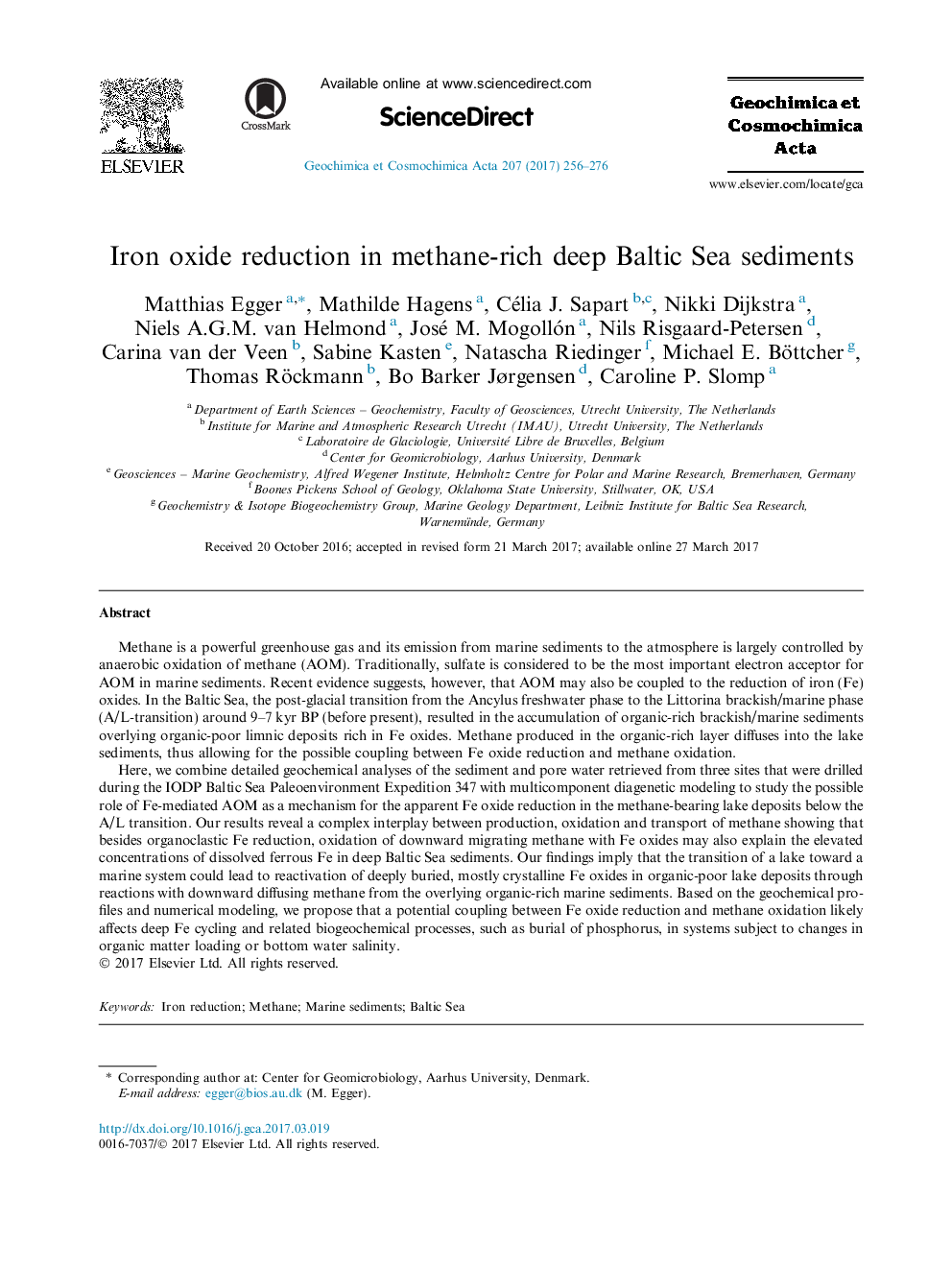| کد مقاله | کد نشریه | سال انتشار | مقاله انگلیسی | نسخه تمام متن |
|---|---|---|---|---|
| 5783528 | 1637950 | 2017 | 21 صفحه PDF | دانلود رایگان |
Methane is a powerful greenhouse gas and its emission from marine sediments to the atmosphere is largely controlled by anaerobic oxidation of methane (AOM). Traditionally, sulfate is considered to be the most important electron acceptor for AOM in marine sediments. Recent evidence suggests, however, that AOM may also be coupled to the reduction of iron (Fe) oxides. In the Baltic Sea, the post-glacial transition from the Ancylus freshwater phase to the Littorina brackish/marine phase (A/L-transition) around 9-7 kyr BP (before present), resulted in the accumulation of organic-rich brackish/marine sediments overlying organic-poor limnic deposits rich in Fe oxides. Methane produced in the organic-rich layer diffuses into the lake sediments, thus allowing for the possible coupling between Fe oxide reduction and methane oxidation.Here, we combine detailed geochemical analyses of the sediment and pore water retrieved from three sites that were drilled during the IODP Baltic Sea Paleoenvironment Expedition 347 with multicomponent diagenetic modeling to study the possible role of Fe-mediated AOM as a mechanism for the apparent Fe oxide reduction in the methane-bearing lake deposits below the A/L transition. Our results reveal a complex interplay between production, oxidation and transport of methane showing that besides organoclastic Fe reduction, oxidation of downward migrating methane with Fe oxides may also explain the elevated concentrations of dissolved ferrous Fe in deep Baltic Sea sediments. Our findings imply that the transition of a lake toward a marine system could lead to reactivation of deeply buried, mostly crystalline Fe oxides in organic-poor lake deposits through reactions with downward diffusing methane from the overlying organic-rich marine sediments. Based on the geochemical profiles and numerical modeling, we propose that a potential coupling between Fe oxide reduction and methane oxidation likely affects deep Fe cycling and related biogeochemical processes, such as burial of phosphorus, in systems subject to changes in organic matter loading or bottom water salinity.
Journal: Geochimica et Cosmochimica Acta - Volume 207, 15 June 2017, Pages 256-276
